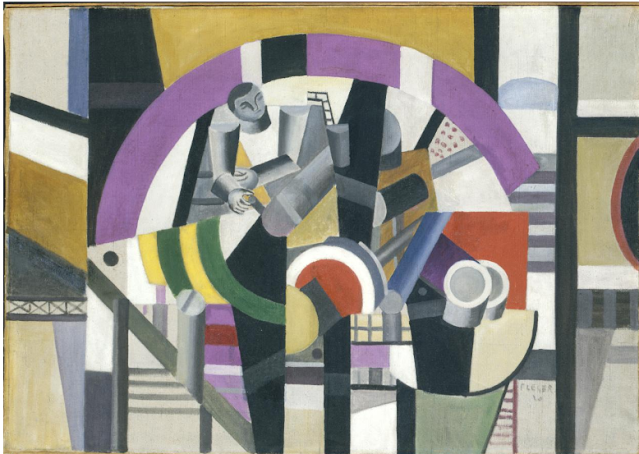George de La Tour, The Cheat With the Ace of Cards
La Tour is an interesting artist. He lived in the Duchy of Lorraine and traveled to Italy, Spain and The Netherlands to receive his education, picking up essential knowledge from leading artists of the day in those areas.. He seems to have had a successful career painting for the local bourgeoisie. And, as in current times, La Tour's life was cut short when he died, with all of his family by an epidemic. He fell into obscurity after his death, and was finally rediscovered in 1915.
A majority of his works were religious in nature, and even the genre painting here, could be said to have a moral theme. Most of La Tour's work uses the technique of chiaroscuro, which dramatically heightens a scene using strong, direct light on the main subjects. For La Tour this light often came from a strategically placed candle.
But no candle here! This light is strong and direct, too, illuminating the table and the elaborately costumed figures, keeping most of the background dark and obscure. I love the psychological drama created by the sidelong gazes and measured gestures. Also, notice that the woman on our left holds a bottle and glass of wine, making us wonder if she is a partner in the cheat. Now, take a careful look at the cheater. He is the only one whose face is in shadow, as he turns to look at US. Yes, we are here too, allowed to play a part. We must be in cahoots with them!?
Notice this is almost a monochromatic painting of reds to browns, with the value range of lights to darks, extreme. Two figures on the left side, two on the right, cemented by the table. Nothing on the table except the coins to the far right, which we can assume will be soon moved to the far left. While there is a slight distance between the couple on our right, the other two are joined. See how the line from the edge of her hair covering, moves down off her shoulder to his brow line to his back and left arm and eventually ends in the "hidden" cards.
On a side note: the Kimball Museum is an architectural wonder, created by the great architect and designer, Lewis Kahn. It is on my bucket list! Kahn has an interesting history, I encourage you to check him out if you have the time.
Make Art a part of your day, it's a beautiful thing to do!




One can't help smiling at this painting. What beautiful porcelain skin, and the variety of hand gestures so skillfully done. Does the dark background stop, in the center of the far right person, to keep our eye from running off the page? The hands seem to have a rhythm across the center of the painting. I think the woman receiving the drink is onto the man's cheating, while the oblivious woman on the right is concentrating on her cards, and appears to have been the winner. The costumes are brilliantly done. The woman's arm resting on the table gives another horizontal line to the otherwise vertical lines. A beautifully done painting!
ReplyDeleteAnd yes, Kahn is certainly interesting - much geometric!!